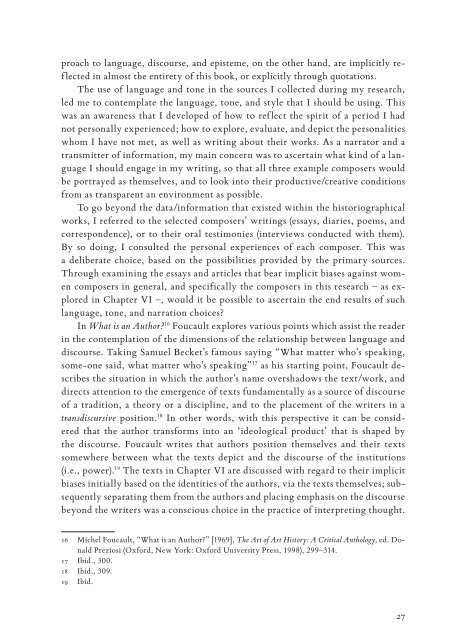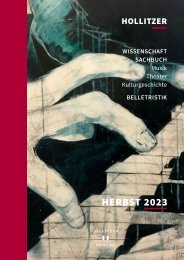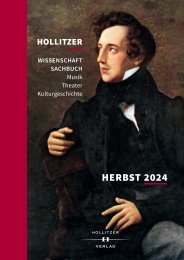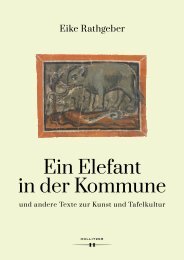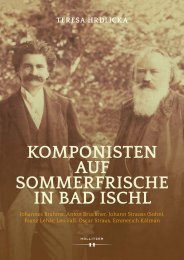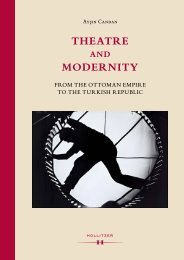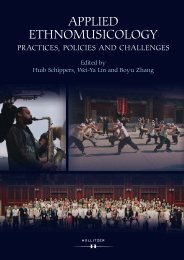Create successful ePaper yourself
Turn your PDF publications into a flip-book with our unique Google optimized e-Paper software.
proach to language, discourse, and episteme, on the other hand, are implicitly reflected<br />
in almost the entirety of this book, or explicitly through quotations.<br />
The use of language and tone in the sources I collected during my research,<br />
led me to contemplate the language, tone, and style that I should be using. This<br />
was an awareness that I developed of how to reflect the spirit of a period I had<br />
not personally experienced; how to explore, evaluate, and depict the personalities<br />
whom I have not met, as well as writing about their works. As a narrator and a<br />
transmitter of information, my main concern was to ascertain what kind of a language<br />
I should engage in my writing, so that all three example composers would<br />
be portrayed as themselves, and to look into their productive/creative conditions<br />
from as transparent an environment as possible.<br />
To go beyond the data/information that existed within the historiographical<br />
works, I referred to the selected composers’ writings (essays, diaries, poems, and<br />
correspondence), or to their oral testimonies (interviews conducted with them).<br />
By so doing, I consulted the personal experiences of each composer. This was<br />
a deliberate choice, based on the possibilities provided by the primary sources.<br />
Through examining the essays and articles that bear implicit biases against women<br />
composers in general, and specifically the composers in this research – as explored<br />
in Chapter VI –, would it be possible to ascertain the end results of such<br />
language, tone, and narration choices?<br />
In What is an Author? 16 Foucault explores various points which assist the reader<br />
in the contemplation of the dimensions of the relationship between language and<br />
discourse. Taking Samuel Becket’s famous saying “What matter who’s speaking,<br />
some-one said, what matter who’s speaking” 17 as his starting point, Foucault describes<br />
the situation in which the author’s name overshadows the text/work, and<br />
directs attention to the emergence of texts fundamentally as a source of discourse<br />
of a tradition, a theory or a discipline, and to the placement of the writers in a<br />
transdiscursive position. 18 In other words, with this perspective it can be considered<br />
that the author transforms into an ‘ideological product’ that is shaped by<br />
the discourse. Foucault writes that authors position themselves and their texts<br />
somewhere between what the texts depict and the discourse of the institutions<br />
(i.e., power). 19 The texts in Chapter VI are discussed with regard to their implicit<br />
biases initially based on the identities of the authors, via the texts themselves; subsequently<br />
separating them from the authors and placing emphasis on the discourse<br />
beyond the writers was a conscious choice in the practice of interpreting thought.<br />
16 Michel Foucault, “What is an Author?” [1969], The Art of Art History: A Critical Anthology, ed. Donald<br />
Preziosi (Oxford, New York: Oxford University Press, 1998), 299–314.<br />
17 Ibid., 300.<br />
18 Ibid., 309.<br />
19 Ibid.<br />
27


